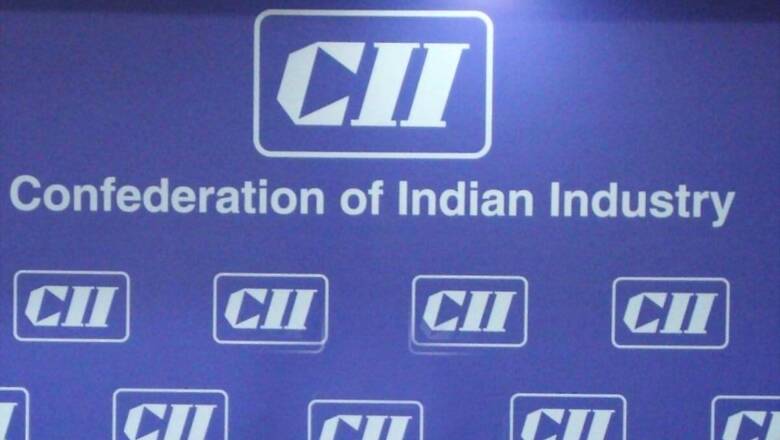
views
Industry body CII on Tuesday said high frequency indicators are showing a material improvement as compared to multi-year low seen in April, and pointing towards a V-shaped recovery after the economy suffered on account of lockdown amid the coronavirus pandemic. A clutch of indicators including GST collections, railway freight traffic, petrol consumption, peak power demand, electronic toll collections, among others, have all mirrored the incipient signs of recovery, it said.
"Though still early, these are indeed promising signs, pointing towards a V-shaped recovery in the immediate aftermath of the lockdown," the chamber said. CII Director General Chandrajit Banerjee said that in order to nurture the nascent signs of recovery, it is important to mitigate the uncertainties that are currently prevailing regarding the restrictions.
"Corporates are unable to plan beyond a horizon of a few weeks, affecting all operations," he said. Even though the early signs of recovery are encouraging, it is critical to build on these, by deploying all the policy levers, he said and added the business activities must be allowed to function, by removing the uncertainties associated with imposing mini lockdowns', he said.
The CII official further said although it is not possible to predict the course of the pandemic, a dashboard approach, triggering predictable responses based on the progression of infections, can reduce uncertainty and boost both consumer and industry confidence, which in turn will support demand and investment recovery. Also, in order to ensure that the supply chains function seamlessly across state and district boundaries, including the containment zones, the latter should be limited to micro areas instead of a wider area.
On its part, the government has played a big role in driving the nascent recovery process by providing direct cash and food transfers to the rural and urban poor, the CII said. "In a significant confidence building measure, it is encouraging to note that the government dues to the industry have started coming in, which are likely to serve as a big and a direct liquidity booster to industry," highlighted Banerjee.
Other "marquee schemes" announced as a part of the Atmanirbhar stimulus package, such as the Rs 3 lakh crore collateral free loan for MSMEs & other businesses and the Rs 30,000 crore special liquidity scheme for NBFCs/HFCs/MFs have all taken off well, he added. The industry body said that it is pertinent to note that the recession staring at economy in the current year is different from the previous recorded episodes of recession which were all triggered by a monsoon failure.
This year, the agricultural sector has emerged as the beacon of hope for India's economy. Apart from the rural sector, the CII said there are significant variations in the performance of different sectors.
For example, some sectors that have done well, which include pharmaceuticals, FMCG and agriculture. Consumer facing industries, such as staple based FMCG, are likely to grow at 15-20 per cent in FY21, primarily on account of an increase in in-house consumption of food and greater demand for sanitation and hygiene products, Banerjee elucidated.
In contrast, sectors such as aviation, hotels and commercial vehicles are still very stressed. Also, the critical construction sector which has a large employment multiplier impact on economy, is bouncing back too, with most construction sites resuming operations, CII said. Commercial real estate is holding up on lease renewals, though new leases are not being signed.
"On the services side, IT sector is expected to grow at about 0-5 per cent in FY21. Companies in this sector are well capitalised with no layoffs expected. "While the growth in hospitals is likely to be flat, the crisis has expedited digital health servicing which otherwise would have taken a few years to actualise," the chamber said.
Several agencies, including the Reserve Bank of India expect economic growth would remain in the negative zone this fiscal.
















Comments
0 comment